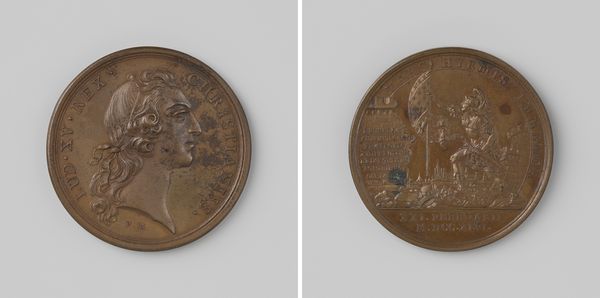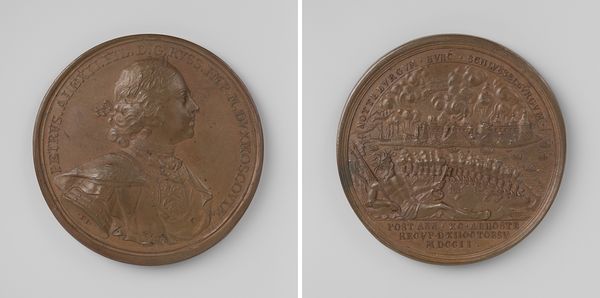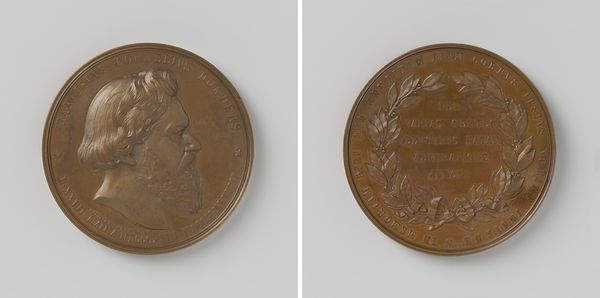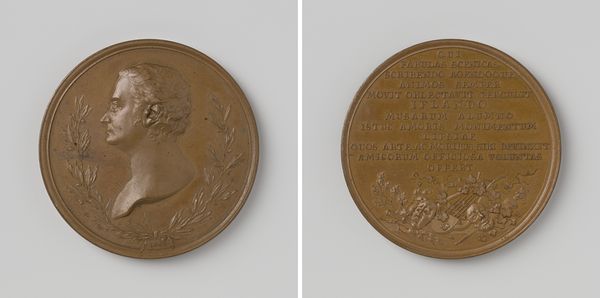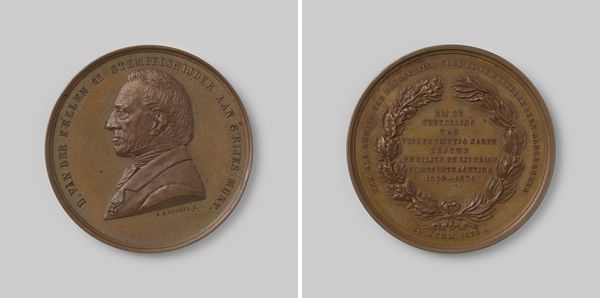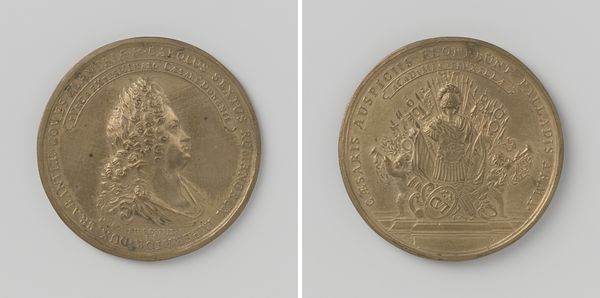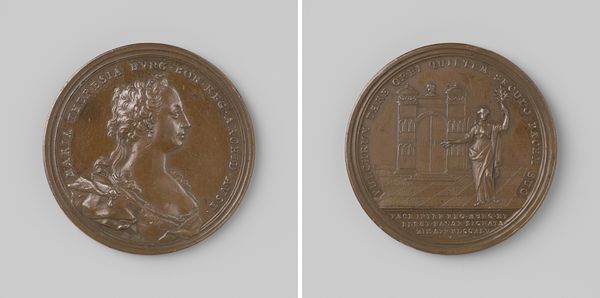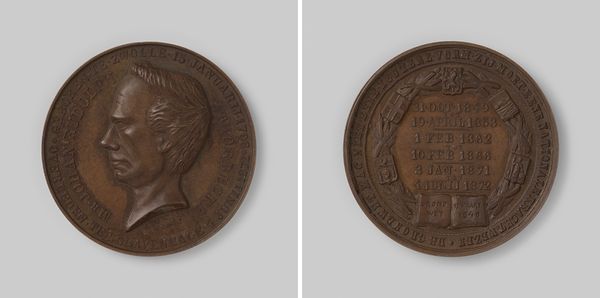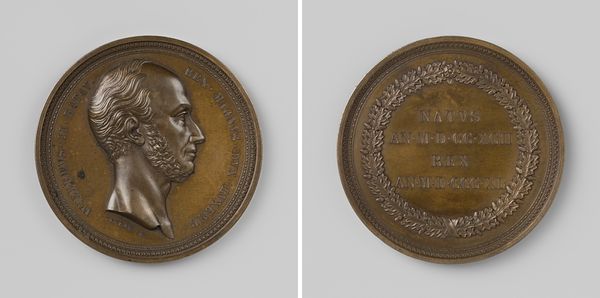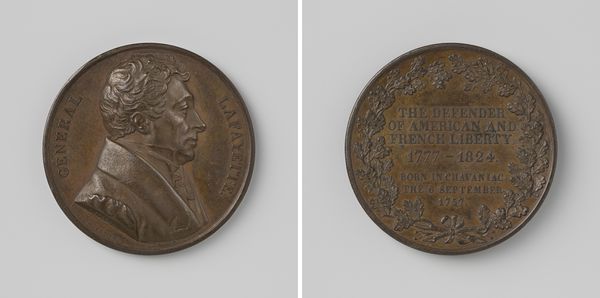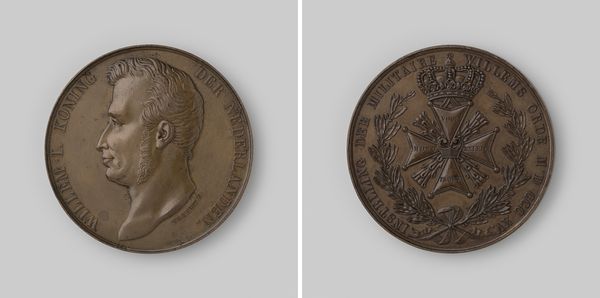
Dimensions: diameter 4.4 cm, weight 37.22 gr
Copyright: Rijks Museum: Open Domain
Editor: So, this bronze medal, made in 1882 by J. Ries, commemorates the tercentenary of the University of Würzburg. It’s fascinating, almost like a coin, but the inscription on the reverse side looks really dense. What do you make of its message and its place within Neoclassicism? Curator: This medal speaks volumes about the intersections of power, knowledge, and historical narrative. Neoclassicism, often adopted by institutions and ruling elites, is used here to legitimize and project an image of scholarly authority. Consider the profile of Ludwig II; doesn’t it evoke classical rulers and ideals of enlightened leadership? Editor: Yes, I see what you mean. He's almost Romanesque in appearance. Is that intentional, to associate him with that legacy? Curator: Absolutely. The University, by aligning itself with Neoclassical aesthetics and referencing the reign of Ludwig II, seeks to present itself as an institution rooted in tradition and intellectual rigor, but what historical context do you think this "tradition" conveniently obscures? Editor: Maybe the social inequalities or political tensions of the time? A curated narrative, almost. Curator: Precisely. Who has access to knowledge, who shapes its dissemination, and who benefits from its authority? Think about who *isn't* represented here – the working class, women, minorities – their exclusion reinforces the University's existing power structure. Editor: That really reframes the piece. It's less a straightforward celebration and more a carefully constructed statement about institutional power. Thanks, I definitely see the medal differently now! Curator: Indeed. Questioning the narratives these objects perpetuate allows us to critically engage with the past and its impact on our present. The surface aesthetic obscures a complicated legacy of power and exclusion.
Comments
No comments
Be the first to comment and join the conversation on the ultimate creative platform.

